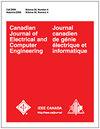采用传统六步和反向脉宽调制驱动方案的无刷直流电机三相逆变电源效率分析
IF 1.7
Q2 Engineering
Canadian Journal of Electrical and Computer Engineering-Revue Canadienne De Genie Electrique et Informatique
Pub Date : 2019-04-02
DOI:10.1109/CJECE.2018.2885351
引用次数: 6
摘要
本文对无刷直流电机驱动的三相逆变器功率效率进行了理论分析和实验验证。反相脉宽调制驱动方案比传统的六步驱动方案具有更高的功率效率,特别是在低转子速度下,因为同步金属-氧化物-半导体场效应晶体管(MOSFET)的二极管导通功率损失较小。然而,功率效率的差异随着转子速度的增加而减小;对于1000r/min以上的转子速度,功率效率的差异可以忽略不计。此外,随着采样频率的增加,反相驱动方案的功率效率比传统的六步驱动方案进一步下降。这是由于同步MOSFET的额外开关功率损失。通过对三相逆变器功率损耗的理论分析,验证了实验结果。本文章由计算机程序翻译,如有差异,请以英文原文为准。
Analysis of the Three-Phase Inverter Power Efficiency of a BLDC Motor Drive Using Conventional Six-Step and Inverted Pulsewidth Modulation Driving Schemes
In this paper, the three-phase inverter power efficiency of a brushless DC (BLDC) motor drive is analyzed theoretically and verified experimentally. An inverted pulsewidth modulation driving scheme has higher power efficiency than a conventional six-step driving scheme, particularly under low rotor speed due to less diode conduction power loss of Sync metal–oxide–semiconductor field-effect transistors (MOSFETs). However, the difference in the power efficiency decreases as the rotor speed increases; for a rotor speed above 1000 r/min, the difference in the power efficiency is negligible. In addition, the power efficiency of the inverted driving scheme drops further than one for the conventional six-step driving scheme with sampling frequency increase. It is due to the additional switching power loss of Sync MOSFET. The theoretical analysis of power loss in a three-phase inverter verifies the experimental results.
求助全文
通过发布文献求助,成功后即可免费获取论文全文。
去求助
来源期刊

自引率
0.00%
发文量
27
期刊介绍:
The Canadian Journal of Electrical and Computer Engineering (ISSN-0840-8688), issued quarterly, has been publishing high-quality refereed scientific papers in all areas of electrical and computer engineering since 1976
 求助内容:
求助内容: 应助结果提醒方式:
应助结果提醒方式:


